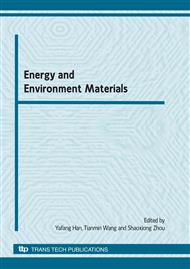p.28
p.33
p.38
p.47
p.56
p.63
p.67
p.78
p.85
3D Dynamic Simulation for Random-Distributed Aggregate Model of Plain Concrete
Abstract:
Since meso-structure of plain concrete can not be observed directly, numerical simulation is the main approach to obtain the model coincident with the real structure on statistics. By applying the discrete element method, we have developed the 3D dynamic simulation for random aggregate model of plain concrete. According to the real ration of mass, the spatial positions of aggregate have been obtained, which is more close-grained compared with the random-distributed models based on Monte Carlo method. Compared with the geometrical generating algorithm for 2D random polyhedral aggregate, the algorithm for 2D or 3D random polyhedral aggregate is simpler. The results are the foundation for further studying the interface fracture and chloride diffused channels.
Info:
Periodical:
Pages:
56-62
Citation:
Online since:
May 2010
Authors:
Keywords:
Price:
Сopyright:
© 2010 Trans Tech Publications Ltd. All Rights Reserved
Share:
Citation:


